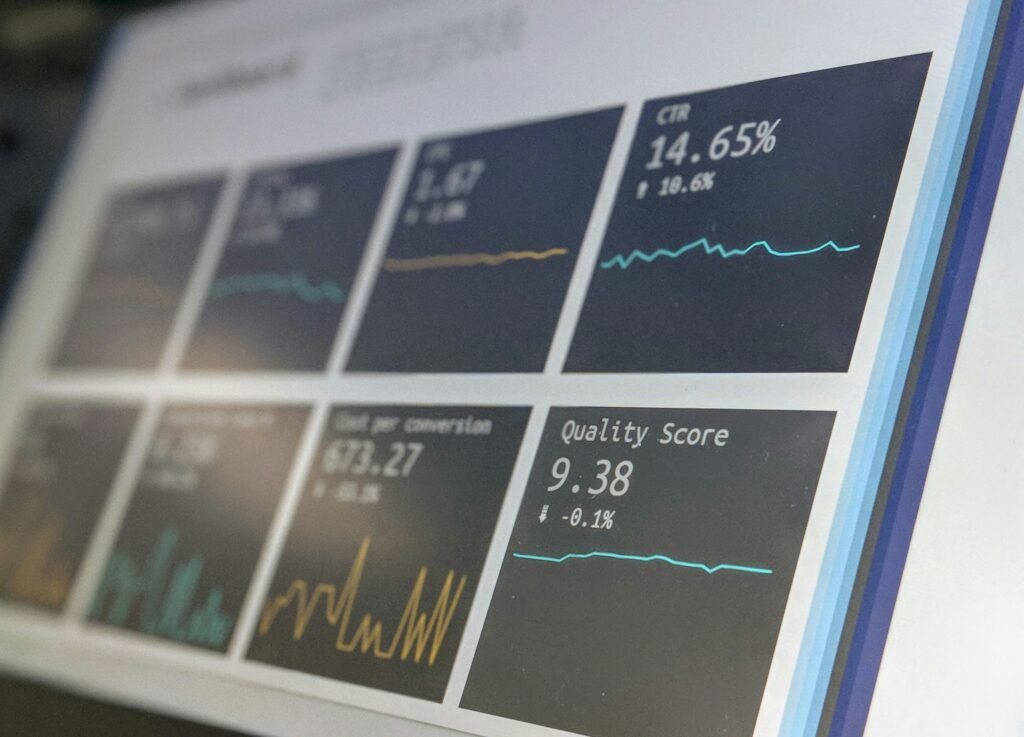Understanding E-commerce Conversion Rates
Importance of Conversion Rate Optimization
E-commerce conversion rate optimization (CRO) is crucial for online retail success. It involves enhancing various elements of an online store to increase the percentage of visitors who complete a desired action, such as making a purchase or signing up for a newsletter. A higher conversion rate not only boosts revenue but also maximizes the value of existing website traffic. For e-commerce businesses aiming for growth, focusing on CRO is essential as it allows them to make the most out of their marketing efforts.
When an e-commerce business implements effective CRO strategies, it can improve user experience, reduce bounce rates, and encourage customer loyalty. Therefore, investing in optimization efforts can lead to sustainable long-term growth for online retailers and provide a competitive edge in the market.
Industry Average Conversion Rates
Understanding industry averages for conversion rates provides valuable benchmarks for e-commerce businesses. As of 2024, the average conversion rate for e-commerce sites typically ranges from 2.5% to 3%, with 2.5% being a solid target across various sectors (ActiveCampaign Blog). Some specific insights into average conversion rates across popular e-commerce niches are outlined in the following table:
| E-commerce Niche | Average Conversion Rate (%) |
|---|---|
| General E-commerce | 2.5 – 3.0 |
| Automotive Repair | 12.96 |
| Furniture | 2.53 |
| Popular Niches Average | 0.90 – 1.00 |
| Google Ads | 6.96 |
| Average Global Conversion | 3.68 |
E-commerce businesses usually aim for a conversion rate ranging between 2% and 5%. For example, a product page that receives 1,000 visitors and achieves 30 sales would reflect a conversion rate of 3%, which falls within the standard range (Shogun). Understanding these statistics allows e-commerce owners to evaluate their performance and establish realistic yet ambitious goals for their businesses.
For more detailed strategies on optimizing conversions, interested business owners can explore various e-commerce marketing strategies that align with their unique objectives.
Strategies for E-commerce Conversion Optimization
E-commerce conversion rate optimization involves implementing various effective strategies to enhance customer engagement and increase sales. Here are three key strategies that can significantly impact conversion rates for online retailers.
Utilizing Videos for Higher Conversions
Incorporating videos into landing pages has proven to be an effective method for boosting conversions. The use of videos can lead to an increase in conversions by 86% and enhance brand association by 139% (ActiveCampaign Blog). Videos engage users more effectively than text alone, illustrating product benefits, providing demonstrations, or sharing customer testimonials.
| Video Benefits | Impact on Conversions |
|---|---|
| Increases engagement | +86% |
| Enhances brand association | +139% |
To effectively utilize videos, ensure they are short, informative, and tailored to your target audience. Videos can also be optimized for mobile devices, ensuring a seamless viewing experience for all users. Integrating video content can create a more compelling narrative and encourage users to take desired actions.
Harnessing the Power of A/B Testing
A/B testing is a crucial strategy in e-commerce conversion rate optimization. This method involves experimenting with different elements of landing pages, such as messaging, visuals, form placement, and positioning, to identify what resonates best with visitors (ActiveCampaign Blog). This data-driven approach allows retailers to make informed decisions to enhance user experience and increase conversions.
| A/B Testing Components | Purpose |
|---|---|
| Messaging | Identify persuasive language |
| Visuals | Determine appealing images |
| Form placement | Optimize user interaction |
| Positioning | Enhance visibility of CTAs |
By continuously testing and refining various elements, e-commerce businesses can create high-converting pages that effectively guide users toward completing desired actions. Implementing A/B testing as a regular practice can lead to sustainable improvements in conversion rates.
Leveraging Retargeting Techniques
Retargeting is a powerful conversion enhancement strategy that re-engages users who have previously visited an e-commerce site but did not finalize a purchase. This technique focuses on reaching out to visitors already familiar with the brand, reminding them of products they viewed or showing them personalized ads based on their online behavior.
The benefits of retargeting include:
| Retargeting Advantages | Description |
|---|---|
| Increased brand recall | Users are reminded of the brand |
| Higher conversion potential | Familiarity boosts conversion odds |
| Targeted advertising | Ads tailored to user behavior |
Implementing retargeting campaigns can significantly improve conversion rates by guiding users back to complete their purchases and enhancing overall brand loyalty.
Integrating these strategies into an e-commerce marketing plan can lead to substantial improvements in conversion rates. For further assistance, explore our articles on e-commerce marketing strategies and e-commerce marketing tools.
Advanced Tactics for Conversion Rate Improvement
To enhance e-commerce conversion rate optimization, it is essential to implement advanced tactics that can lead to significant improvements in performance. These tactics include multipage testing strategies, split URL testing benefits, and the importance of the Bayesian statistical approach.
Multipage Testing Strategies
Multipage testing allows e-commerce businesses to experiment with changes to specific elements across multiple pages of a website. This can include testing various parts of the sales funnel or modifying recurring elements found throughout the user journey (VWO). By evaluating how changes impact the user experience across multiple pages, businesses can identify which modifications yield the best results in terms of conversions.
| Strategy | Description | Benefits |
|---|---|---|
| Test Funnel Changes | Experiment with different layouts or content on each stage of the funnel | Improves user flow and identifies barriers to conversion |
| Modify Recurring Elements | Alter elements that appear on multiple pages (e.g., navigation bars or calls-to-action) | Ensures consistency while measuring the impact on conversions |
Implementing multipage testing can lead to a better understanding of how various components work together to drive conversions on an e-commerce site.
Split URL Testing Benefits
Split URL testing involves the experimentation of an entirely new version of an existing webpage URL against the original to analyze performance. This method is particularly effective for assessing major changes in layout, design, or content that may significantly impact user interaction.
| Feature | Original URL | Test URL |
|---|---|---|
| Design | Current layout | New design |
| Calls-to-Action | Standard button placement | Enhanced button placements |
By testing two completely different versions, businesses can gather comprehensive data on user preferences and overall site effectiveness. This approach helps in making informed decisions based on direct performance comparisons, which is vital in e-commerce marketing strategies.
Importance of Bayesian Statistical Approach
The Bayesian statistical approach in A/B testing offers distinct advantages over traditional methods. It enables businesses to obtain actionable insights almost 50% faster than the Frequentist approach. This efficiency permits quicker conclusions based on data, allowing for timely adjustments and optimization of marketing strategies (VWO).
| Approach | Speed of Results | Data Usage |
|---|---|---|
| Bayesian | Nearly 50% faster | Real-time adjustments based on data trends |
| Frequentist | Slower outcomes | Fixed data analysis |
By leveraging this statistical approach, e-commerce businesses can enhance their decision-making processes and adapt creative strategies to maximize conversions more effectively.
Incorporating these advanced tactics for e-commerce conversion rate optimization can greatly enhance the effectiveness of marketing efforts. Understanding and implementing these strategies can lead to improved customer experiences and increased revenue. For further insights on tools that can assist with these strategies, explore our section on e-commerce marketing tools.
Benchmarking and Industry Insights
Understanding average conversion rates across various e-commerce niches helps businesses gauge their performance and identify areas for improvement. By setting appropriate targets above these averages, e-commerce business owners can strive for better outcomes in conversion rate optimization.
Average Conversion Rates in E-commerce Niches
In 2023, the global average conversion rate for e-commerce websites was 3.65%. This figure serves as a benchmark for businesses aiming to optimize their e-commerce performance. Rates surpassing 4% are considered satisfactory, indicating that there is potential for optimization (VWO).
The following table provides insight into the average conversion rates across different e-commerce sectors, helping business owners understand where their performance compares:
| E-commerce Niche | Average Conversion Rate (%) |
|---|---|
| Overall E-commerce | 3.65 |
| Fashion | 1.2 – 2.0 |
| Electronics | 1.3 – 2.1 |
| Health & Beauty | 1.8 – 3.0 |
| Home Goods | 1.5 – 2.5 |
| Food & Beverage | 2.0 – 3.5 |
E-commerce businesses in 2024 aim for a conversion rate between 2% to 5%. For example, a product page receiving 1,000 visitors and achieving 30 sales translates to a 3% conversion rate, aligning well within the expected range.
Setting Targets Above Industry Averages
To stay competitive in the e-commerce landscape, it is vital for businesses to target conversion rates of 2.50% or higher, even when industry averages linger between 0.90% and 1.00%. Such ambitious targets emphasize the importance of exceeding standard benchmarks (Optmyzr).
Setting these elevated targets not only fosters a culture of continuous improvement within the organization but also impacts the bottom line positively. Conversion Rate Optimization (CRO) endeavors can significantly reduce customer acquisition costs and enhance return on investment (ROI), with strategies that elevate conversion rates from 1% to 3% demonstrating substantial financial benefits (Shogun).
By benchmarking against industry averages and setting higher targets, e-commerce businesses can develop effective e-commerce marketing strategies to enhance their performance and drive revenue growth.
Tools for Conversion Rate Optimization
Utilizing effective tools is essential for enhancing e-commerce conversion rates. These tools, known as Conversion Rate Optimization (CRO) tools, help analyze user behavior and refine user experiences to drive better website performance.
Overview of CRO Tools
CRO tools focus on improving website conversion rates by employing various techniques such as A/B testing and personalization. These tools provide valuable insights into user interactions and preferences, which can inform adjustments to the e-commerce platform (VWO). Some of the features these tools offer include:
| Tool Feature | Description |
|---|---|
| Heat Mapping | Visual representation of user interactions on the site. |
| Session Recordings | Playback of user sessions to identify behavior patterns. |
| Form Analytics | Analysis of how users complete forms and where they abandon them. |
| A/B Testing | Testing different versions of a webpage to see which performs better. |
| Personalization | Tailoring website experiences based on user data. |
| Feedback Tools | Collecting user feedback for continuous improvement. |
Implementing these tools can help businesses address the “leaky bucket syndrome,” where potential customers leave without making a purchase.
Key Features of CRO Tools
When selecting a CRO tool, several key features should be considered to ensure effective optimization. Crucial features include:
- GDPR Compliance: Ensures that data collection practices meet legal requirements.
- Integrations: Compatibility with other marketing tools, such as e-commerce email marketing and e-commerce marketing automation, is vital for cohesive strategy implementation.
- Security Features: Protects user data and enhances trust.
- Multi-User Dashboard: A user-friendly interface allowing teams to collaborate efficiently during the experimentation and optimization processes.
Popular tools like Google Analytics also play a significant role in CRO efforts, providing real-time tracking of website traffic, user activities, and conversions, making it an indispensable asset for data-driven optimization (VWO). For e-commerce business owners and marketers, utilizing these tools effectively can lead to improved conversion rates and overall business success.
Best Practices for E-commerce Success
To boost e-commerce conversion rates, implementing best practices is essential. Key areas of focus include ensuring product-audience fit and designing effective order and payment forms.
Product-Audience Fit Importance
The product-audience fit refers to the alignment between a product and its target market. Ensuring that a product meets the genuine needs and demands of the audience is crucial for successful business operations and improving e-commerce conversions (Optmyzr). When products resonate with customers, they are more inclined to make a purchase.
To achieve a strong product-audience fit, consider the following strategies:
| Strategy | Description |
|---|---|
| Market Research | Conduct surveys, focus groups, and analyze competitor offerings to understand customer preferences. |
| Target Audience Segmentation | Identify specific segments of the audience based on demographics, interests, and behaviors to tailor marketing efforts. |
| Value Proposition | Clearly communicate how a product solves a problem or fulfills a need for the target audience. |
A well-defined Call-to-Action (CTA) also plays a significant role in guiding visitors on the necessary steps to take, thereby enhancing the likelihood of conversion (Absolute Digital).
Designing Effective Order and Payment Forms
The design of order and payment forms has a significant impact on customer decisions to complete a purchase. Poorly designed forms, especially those not optimized for mobile users, can lead to increased cart abandonment and decreased conversion rates.
Here are some best practices for creating effective order and payment forms:
| Best Practice | Description |
|---|---|
| Simplified Forms | Minimize the number of fields and steps required to complete a purchase, making it user-friendly. |
| Mobile Optimization | Ensure forms are responsive and functional on mobile devices, considering the growing trend of mobile commerce. |
| Security Indicators | Include visual cues, such as security badges, to reassure customers that their personal and payment information is protected. |
Incorporating high-quality, relevant content throughout the purchasing process can further enhance engagement and influence conversion rates (Absolute Digital). By emphasizing product benefits and addressing potential customer concerns, businesses can foster trust and encourage more sales, which is essential for effective e-commerce conversion rate optimization.
Emerging Trends in E-commerce Conversion
As e-commerce evolves, several emerging trends are significantly impacting conversion rates. Two notable trends are the impact of user-generated content and the shift towards mobile commerce.
Impact of User-Generated Content
User-generated content (UGC) plays a critical role in driving e-commerce conversions. Engagement with UGC can lead to a substantial increase in conversions, with businesses experiencing a 102.4% boost on average when actively utilizing such content.
UGC includes customer reviews, photos, and testimonials that provide social proof to potential buyers. This type of content helps to establish trust and credibility, encouraging new visitors to make purchases. E-commerce businesses can incorporate UGC on product pages, social media, and marketing campaigns to enhance user engagement and drive sales.
To illustrate the effectiveness of UGC, here’s a comparison of conversion rates:
| Type of Content | Average Conversion Rate |
|---|---|
| User-Generated | 3.2% |
| Brand-Generated | 1.5% |
This table demonstrates that leveraging user-generated content is a strategic approach for improving conversion rates.
Shift Towards Mobile Commerce
The shift towards mobile commerce is another trend transforming e-commerce conversion rate optimization. As mobile device usage continues to rise, e-commerce businesses must prioritize mobile optimization to cater to this growing audience.
This transition involves ensuring that websites are mobile-friendly, with seamless navigation and fast load times. Advanced technologies such as AI-powered personalization and omnichannel experiences are also essential for enhancing the mobile shopping journey (SiteTuners).
Here are some statistics that highlight the importance of mobile commerce:
| Statistic | Value |
|---|---|
| % of E-commerce Sales via Mobile | 54% |
| % Increase in Mobile Traffic | 35% year-over-year |
| % of Users Abandon Mobile Sites | 70% |
As shown in the table, a significant portion of e-commerce sales occurs on mobile devices. Businesses that optimize for mobile can improve user satisfaction and boost conversions.
Overall, staying informed about these emerging trends—user-generated content and mobile commerce—will enable e-commerce business owners, CMOs, and online retailers to effectively enhance their e-commerce conversion rate optimization. Incorporating these strategies can lead to increased website traffic and ultimately higher revenue.
Optimizing Customer Experience
Focusing on customer experience is key to improving e-commerce conversion rate optimization. This optimization can be achieved through several strategies, including the implementation of trust badges and enhancing user navigation paths.
Importance of Trust Badges
Trust badges, which are visual symbols that indicate a business’s reliability and security, play a crucial role in enhancing customer confidence. These badges can positively influence e-commerce conversions by building trust and reducing cart abandonment rates. Common types of trust badges include:
| Type of Trust Badge | Description |
|---|---|
| SSL Certificates | Signifies that the site encrypts user data, providing security during transactions. |
| Payment Security Badges | Indicates that customer payment details are safe and secure. |
| Money-Back Guarantee | Reassures customers that they can return products without hassle. |
| Customer Review Logos | Showcases positive feedback from previous buyers, establishing credibility. |
Integrating these elements into the online shopping experience is essential. A study indicates that approximately two out of every three customers will read the return policy before making a purchase, underlining the need for a clear, customer-friendly return policy to drive sales (BigCommerce). Businesses that incorporate well-recognized trust symbols can significantly impact their conversion rates by demonstrating legitimacy and safety.
Enhancing User Navigation Paths
User experience hinges heavily on how easily customers can navigate an e-commerce site. A well-defined structure simplifies the shopping journey, allowing customers to find what they are looking for quickly. Factors contributing to an optimized user navigation experience include:
- Intuitive Menu Design: Clear and concise navigation menus help direct users to desired categories or products.
- Search Functionality: An effective search bar enables customers to locate products swiftly.
- Logical Categorization: Grouping products into relevant categories enhances discoverability.
- Visible Call-to-Action (CTA): Clear CTAs guide users on the next steps, increasing the likelihood of conversion (Absolute Digital).
A website’s speed and performance are also critical. Slow-loading pages can deter potential buyers, as studies show that even a few seconds of delay can lead to increased bounce rates and decreased conversions. Therefore, ensuring fast load times, along with a strategic focus on user-friendly navigation, is vital for maintaining customer interest and driving conversions. For more insights on enhancing marketing efforts, consider exploring e-commerce marketing strategies or e-commerce marketing tools.




















